Bulgarian Shepherd (Karachay Dog)





Warning: Illegal string offset 'label' in /home/panda/sites/zoonika/wp-content/themes/zoonika/template-parts/animals/animals-param-item.php on line 32
�



Breed Description
The Bulgarian Shepherd Dog, also known as the Karakachan Dog, is one of the oldest breeds, with a history closely linked to the Balkan region and the traditions of the nomadic Karakachan herders. For centuries, these dogs have been used as loyal guardians of flocks of sheep and goats, as well as reliable protectors of the property and families of shepherds. The breed’s origins date back over two thousand years to when ancient Thracians practiced animal husbandry in the mountainous regions of Bulgaria.
The Karakachan Dog is named after the Karakachan ethnic group, who led a nomadic lifestyle and bred this dog to safeguard their herds in harsh conditions. These dogs were known for their incredible endurance, fearlessness, and loyalty, making them indispensable companions. Their role involved not just protection against predators like wolves and bears, but also guarding territories from intruders. Through strict selection and natural breeding, the Karakachan Dog has retained its innate qualities, including strength, intelligence, and resilience to adverse climatic conditions.
In the 20th century, the breed faced the threat of extinction due to agricultural mechanization and changing lifestyles. However, thanks to the efforts of enthusiasts and Bulgarian canine experts, efforts to restore the breed began in the 1990s. In 1991, the first standard for the Karakachan Dog was approved, and in 2005, the breed was officially registered by the Bulgarian National Dog Breeding Club. Today, the Karakachan Dog is recognized by the Bulgarian Kennel Federation, which is part of the International Canine Federation (FCI), although the breed remains rare outside of Bulgaria.
Modern Karakachan Dogs continue to serve as guardians and companions. Their natural traits, such as courage, loyalty, and independence, make them an excellent choice for farmers in need of reliable protection. At the same time, they are becoming popular among enthusiasts of rare breeds, thanks to their history, unique character, and ability to be faithful friends.
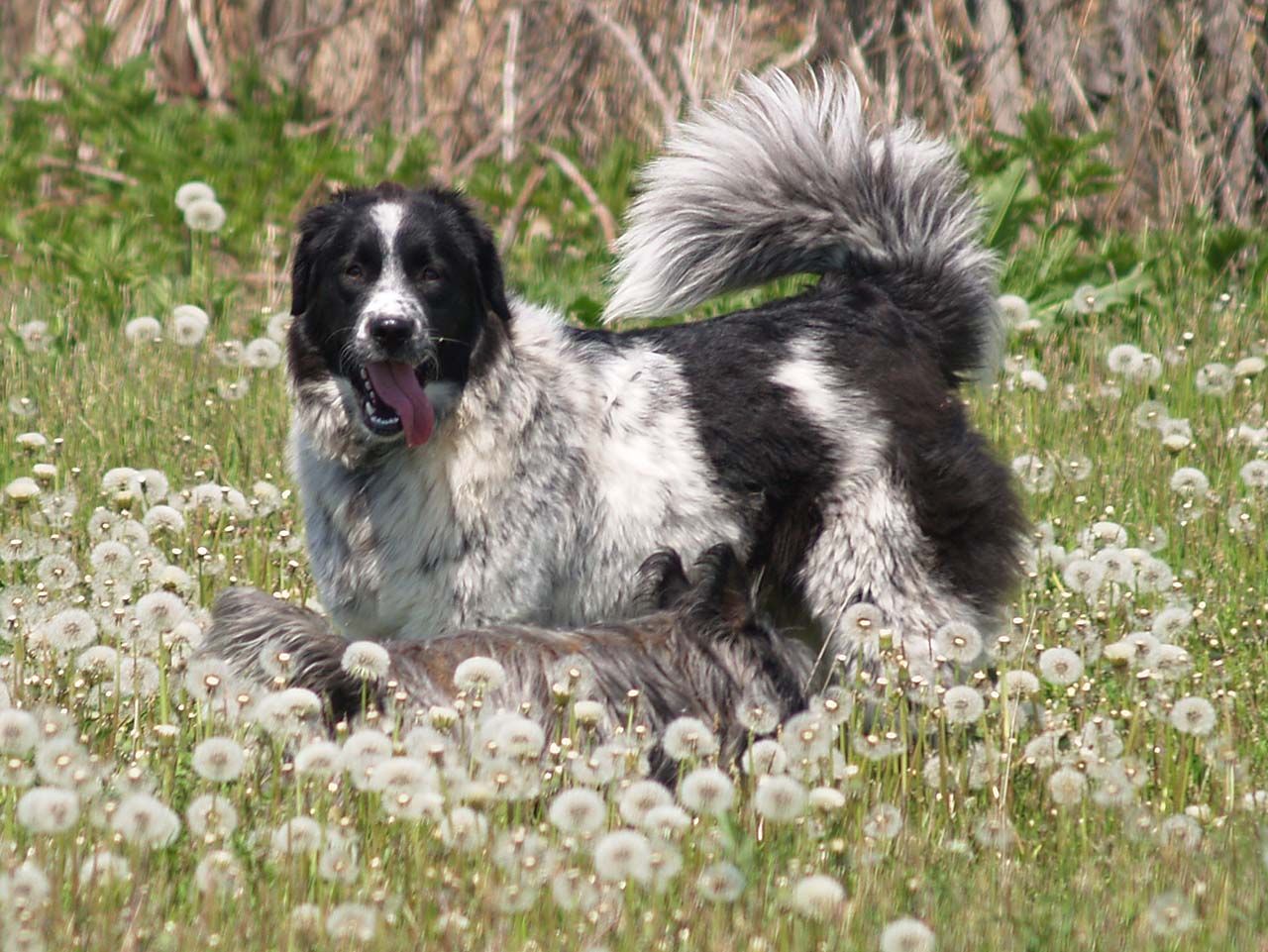
Appearance
The Karakachan dog is a large, powerful, and harmoniously built breed that stands out with its impressive appearance and confident demeanor. Its body structure is strong and proportional, with well-developed muscles that highlight its working qualities. The dense coat with a thick undercoat provides protection against harsh climatic conditions, while the contrasting colors, usually including white, black, and brown shades, give the dog recognition and expressiveness.
The average height of a Karakachan dog ranges from 63 to 75 cm for males and 60 to 69 cm for females. The weight typically varies from 40 to 60 kg, depending on the sex and physical characteristics of the individual dog. These dimensions make the breed impressive while still maintaining agility and ease of movement.
The lifespan of a Karakachan dog averages 12 to 14 years, which is a good indicator for a large breed. With proper care, a balanced diet, and sufficient physical activity, these dogs remain active and capable for many years. The appearance of the Karakachan dog perfectly combines strength, endurance, and natural dignity, which are symbols of its ancient heritage and functional purpose.
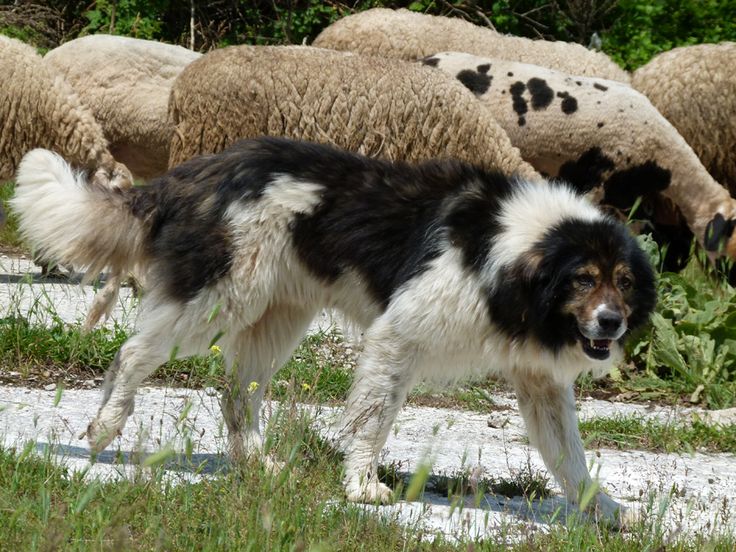


Отличительные черты

Голова

Морда

Уши

Глаза

Зубы

Корпус

Конечности

Хвост

Шерсть

Окрас
Character
The Karakachan dog possesses a strong and independent character, shaped over centuries of service as a guardian of flocks and territories. It is marked by innate bravery and determination, making it an excellent protector. These dogs are always ready to defend their family, whether from predators or strangers. Karakachans are intelligent and have a well-developed instinct for protection, but they are not aggressive unless necessary, preferring to first warn of a threat with loud barking.
These dogs are very loyal to their owners and tend to build a strong emotional bond with their family. Despite their independence, they appreciate attention and affection but will not be overly demanding, preferring to maintain their dignity. Karakachans get along well with children, showing patience and care, but due to their size, they can be clumsy; therefore, interactions with small children require supervision.
In everyday life, the Karakachan dog is calm and balanced, but it needs space and regular physical activity. Walks, active games, or work on the property help maintain their physical and emotional health. These dogs happily complete assigned tasks and love to feel useful.
Karakachans are observant and keenly responsive to changes in their surroundings. They tend to make decisions independently, which can be both an asset and a challenge for the owner. These dogs do not tolerate rough treatment and require respectful handling. They value stability, clear rules, and a confident owner who will act as their leader.
The habits of the Karakachan dog include patrolling the territory, guarding its space and family members. They enjoy observing their surroundings, often choosing elevated points for a better view. This breed is ideal for those seeking a reliable, independent, and loyal companion ready for work and protection throughout its life.
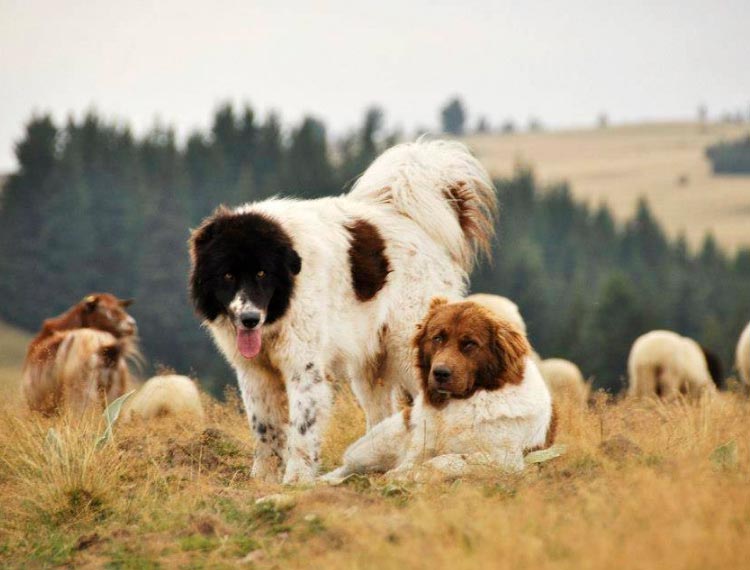
Survival in extreme conditions
Karachays are capable of enduring harsh climatic conditions, from snowy winters to scorching summers. Their thick fur and natural endurance allow them to work tirelessly even in the most extreme situations.Care and Maintenance
The Karakachan dog requires individual care that takes into account its large size, thick coat, and active lifestyle. Special attention must be paid to its fur, which has a dense undercoat that protects from various weather conditions. Brushing 1-2 times a week helps remove dead hair and keep the coat in good condition, especially during shedding periods. Bathing is done as needed, using gentle shampoos to avoid drying out the skin.
The dog needs ample physical activity. Walks, tasks related to guarding the territory, or active play help keep it in shape. Due to their natural independence, Karakachans appreciate space, so an ideal home would have a yard where they can move freely. However, it’s important to remember that the dog requires close contact with the family, and isolation can negatively affect its emotional state.
Ears and eyes should be regularly checked and cleaned of debris, as their long fur can lead to dirt accumulation. It’s also vital to monitor the condition of their paws, especially if the dog spends a lot of time outdoors or is very active. The diet should be balanced and include high-quality feeds or natural foods with the necessary amounts of protein and fats to maintain energy levels.
The Karakachan dog values clarity and consistency. It appreciates owners who show confidence and respect, set clear rules, and provide enough attention. They do not tolerate rudeness or physical punishment, preferring fair and gentle treatment. Long periods of solitude and limited space are unsuitable for them, as this can cause boredom or stress. With proper care and attention, the Karakachan dog can become a reliable and loyal friend, ready to protect and support its family.
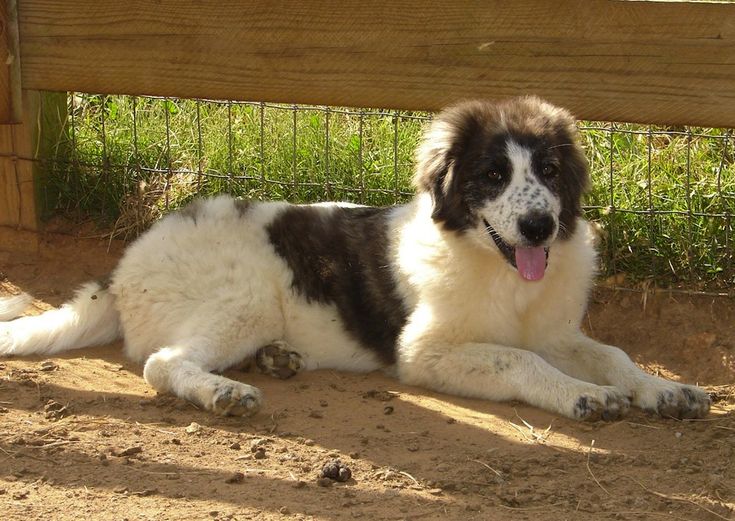
Dogs of the ancient Thracians
The Karakachan dog is one of the oldest breeds in Europe, with a history spanning more than two thousand years. Its ancestors accompanied the ancient Thracians, protecting herds from predators and guarding territories in mountainous regions.Training and Education
The Karakachan dog is best trained using methods of gentle yet confident positive motivation. These dogs are intelligent, independent, and possess an innate guarding instinct, so training should be consistent and based on trust. Karakachans quickly understand commands when they see their purpose, so it’s important to focus on practical tasks, such as territory guarding or performing duties on a property.
Training should start at an early age, with attention to socialization, so the dog becomes accustomed to various situations, people, and animals. Commands should be given calmly, clearly, and confidently, without raising one’s voice or being harsh, as Karakachans do not tolerate pressure and may show stubbornness. Their independence requires patience and consistency, but they willingly learn when they feel respect from their owner.
The Karakachan dog chooses an owner who demonstrates leadership qualities, confidence, and care. They tend to bond with those who spend more time with them, set clear boundaries, and show patience. These dogs value respectful treatment and are loyal to those who provide them with protection and stability.
A Karakachan dog will obey the person they consider their leader. This should be an owner capable of persistence while also taking into account the needs and individuality of the dog. They respond well to logical tasks and useful assignments, feeling valuable and needed. Karakachans are best suited for experienced owners who are willing to invest time and effort in their upbringing and socialization to gain a reliable and loyal partner. At Zoonyka, elite breed puppies are offered with a complete set of documents.

National wealth of Bulgaria
The Karakachan dog is a national pride of Bulgaria. The breed is officially recognized as a symbol of the country and is actively used in programs for preserving cultural heritage.
How to Choose a Puppy
Choosing a Karakachan dog puppy requires careful consideration to ensure it grows into a full representative of the breed with characteristic traits and appearance. Start by looking for a reputable kennel where the lineage is maintained, and the living conditions meet the standards. The breeder should provide information about the puppy’s parents, their pedigree, working qualities, and health status.
The puppy should have a sturdy build appropriate for its age. It should have thick fur with a dense undercoat and a vibrant coloring typical of the breed, predominantly white with black or brown spots. Its eyes should be clear, and its ears and nose clean, without any signs of discharge. The puppy should appear active but not overly anxious.
Pay attention to its behavior. Karakachans are known for their independence and strong guarding instincts, so the puppy should display confidence, curiosity, and calmness. Avoid overly aggressive or excessively fearful individuals, as this may indicate character issues. The puppy should be approachable but not lose its natural caution.
Ask the breeder to show the puppy’s parents, as their appearance and temperament largely influence the qualities of the offspring. Ensure that the parents have a balanced temperament and conform to breed standards. The breeder should also provide a veterinary passport with records of vaccinations and parasite treatments.
When choosing a puppy, it is important to consider its individuality. The Karakachan dog is not just about looks but also character. Look for a puppy that exhibits an innate sense of confidence and calmness, as these qualities make Karakachans ideal protectors and companions. A well-chosen puppy, with proper care and training, will grow into a loyal friend and reliable guard. With a pedigree from Zooinika, choose the puppy of your dreams.
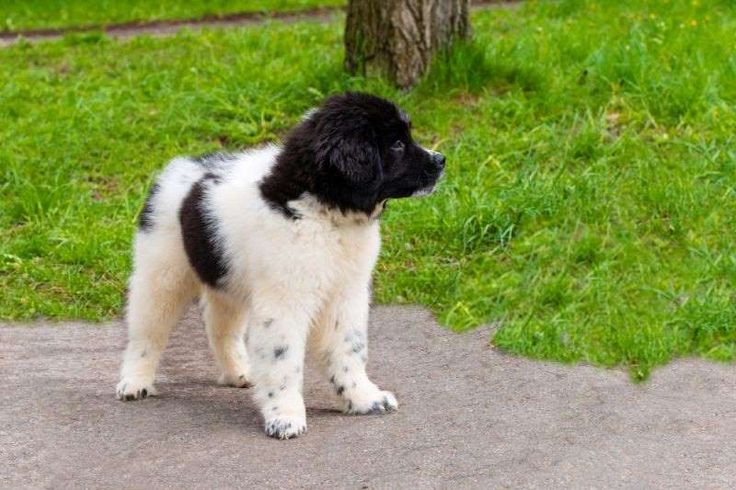
Health and Illnesses
The Karakachan dog is known for its robust health, thanks to natural selection that has shaped the breed over the centuries. These dogs are resilient and adapted to harsh conditions, making them resistant to most diseases. However, like any large breed, they are prone to some issues related to genetics and body structure.
Joint diseases, such as hip or elbow dysplasia, are commonly seen in large breeds. Regular veterinary check-ups and maintaining an optimal weight help minimize the risk of developing these problems. It is important to avoid excessive strain on the joints during the early growth stage of the dog.
Other potential issues for Karakachans include a tendency towards bloat (gastric torsion), which is a frequent concern in large breeds with deep chests. Proper nutrition, divided into several meals a day, and moderate activity after eating reduce the risk of this condition.
Their thick coat requires grooming, as neglect can lead to skin conditions like dermatitis. Regular brushing helps maintain the skin and coat health while preventing parasites such as fleas and ticks, which can carry diseases.
Eye and ear health also require regular attention. A tendency for conjunctivitis or ear infections may occur with insufficient hygiene. Regular inspection and cleaning of the eyes and ears can help prevent potential issues.
The average lifespan of a Karakachan dog is 12-14 years, which is a good indicator for a large breed. Proper nutrition, moderate exercise, regular veterinary check-ups, and timely vaccinations ensure these dogs lead long and healthy lives. With loving care, Karakachans remain active, energetic, and loyal to their owners.
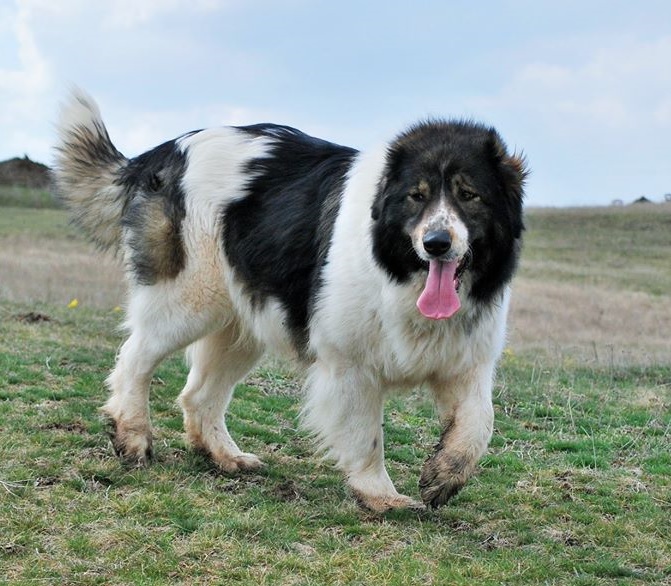



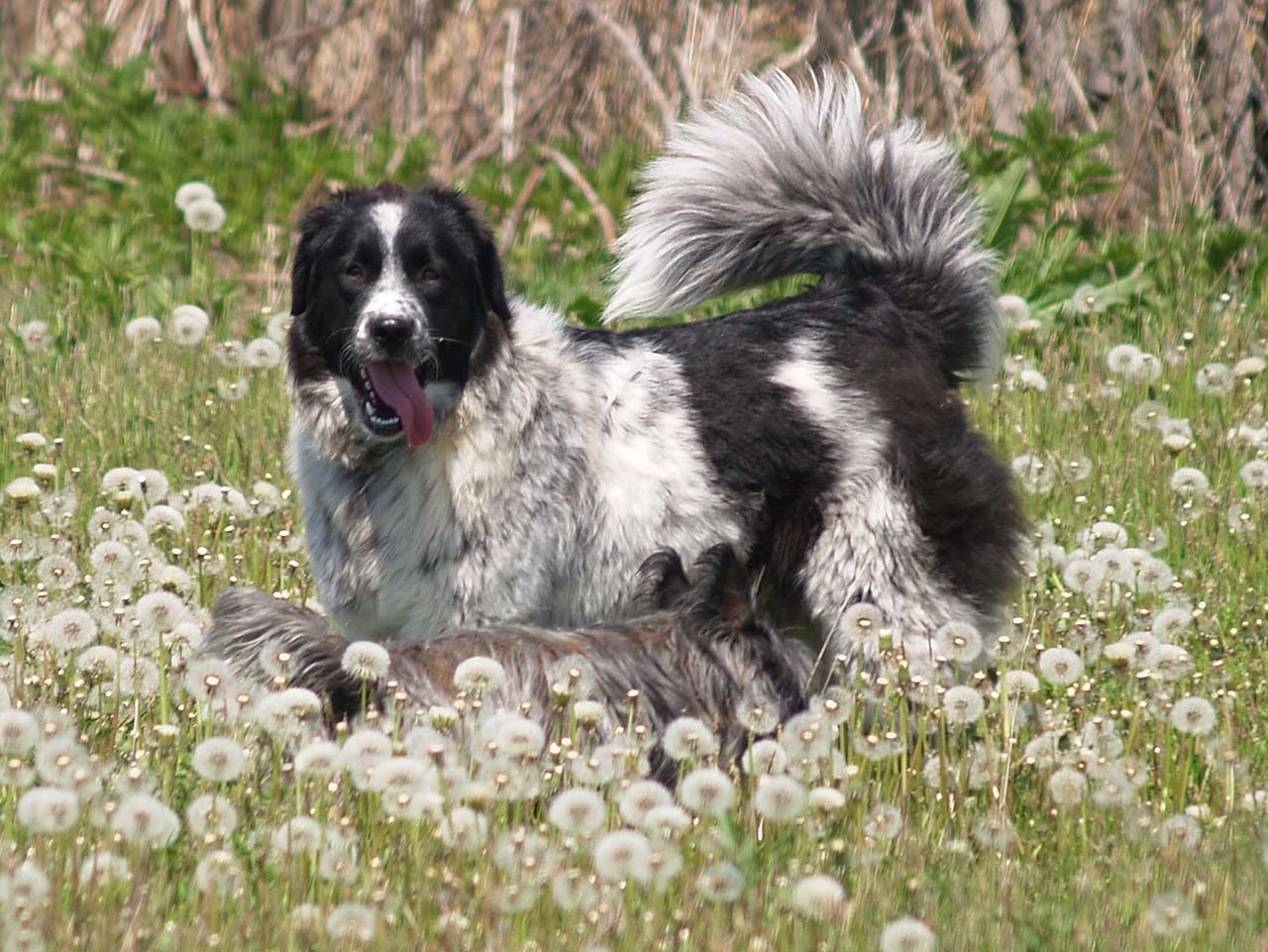


Комментарии
Отзывы могут оставлять пользователи, зарегистрированные на сайте. Администрация портала проверяет достоверность каждого отзыва.